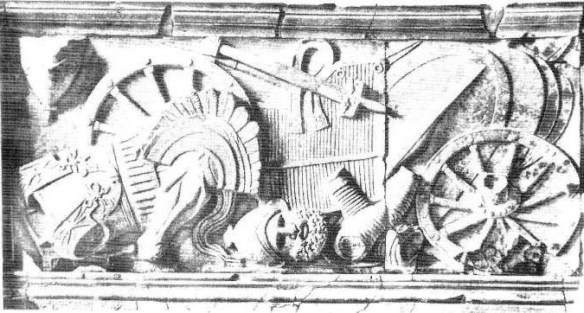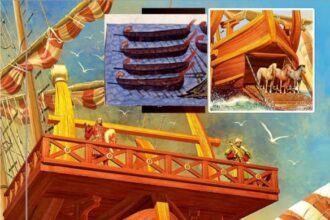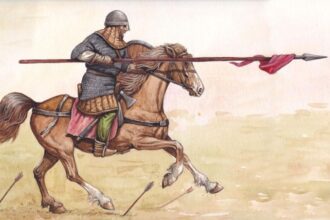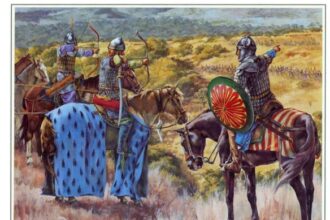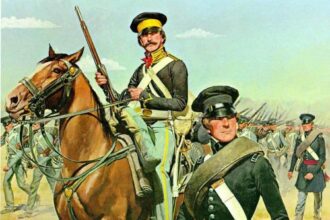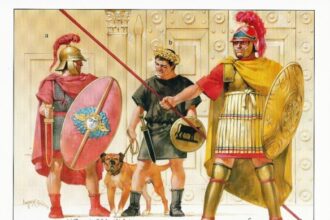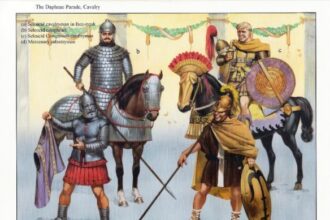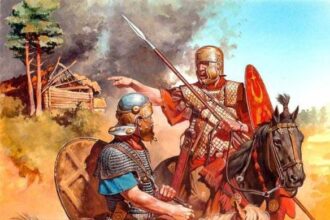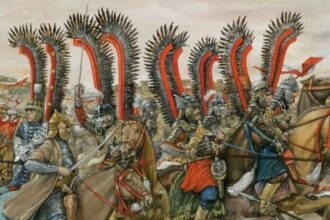Newsletter
Get the latest from Weapons and Warfare right to your inbox.
Follow Us
Explore
Cavalry
THE FIRST CATAPHRACTS I
The most complete depiction of the arms and armour of the Seleucid cataphract is located on the Balustrade Reliefs of the temple of Athena Polias Nikephoros at Pergamum. One of the most impressive features shown among the armament is a metal mask with an incredibly detailed face, including a sculpted beard that was attached to the helmet of the rider.…
Most Recent
MUSLIM HORSE-ARCHERS IN ACTION
‘If you wish to hoot and have a sword, drop the sword from your right hand, seize the wrist loop and slide it up the right forearm. Hold the bow and three arrows in your left hand. If you are on horseback and are also armed with a lance, push…
U.S. Cavalry and the Mexican War
The 2nd Dragoons and the rest of the 1st Dragoons had joined General Zachary Taylor’s force which was attacking Mexico from across the Rio Grande. In May 1846, before the Rio Grande was reached, ‘Rough and Ready’ Taylor, as he was called, routed the Mexican cavalry at the Battle of…
The Hellenistic Period – Weapons 400–150 BC II
THE MUSCLE CUIRASS The muscle cuirass continued to be used as the most elaborate piece of body armour available to wealthier officers. It was presumably this type of cuirass that Epaminondas was wearing when he was injured ‘through the breastplate’ at Mantinea in 362 (Diodorus XV, 87.1). On the Nereid…
The Hellenistic Period – Weapons 400–150 BC III
LIGHT CAVALRY AND CATAPHRACTS Light cavalry of the Hellenistic period were generally mercenaries, called Tarentines. Although originally from Taras in south Italy, the name came to mean just a type of light cavalry armed with javelins and a small shield (Head 1982, pp. 115–16). The small shield of Macedonian style…
Early Imperial Roman Cavalry
To the Romans, the military meant the legions, brigades of Roman citizens commanded by senior senators. They realized that these needed supplementation, but organized the cavalry and light-armed troops they employed as “auxiliaries,” or supplementary troops, in alae and cohorts commanded by prefects of equestrian origin. Cavalry performed such a…
Hussaria at Vienna 1683
By Slawek K. Grzechnik, Name and Origins There is no English equivalent for “hussaria”, Polish armored cavalry of the 16th and 17th centuries. This name should not be confused with that of the huzars, the light cavalry used in the 18th and 19th centuries by European armies. The name “husar”…
Most Popular
IMPERIAL RUSSIAN ARMY – RUSSO–JAPANESE WAR
On the eve of the Russo–Japanese War, Russian land forces were the biggest in the…
Cataphract camels
The Parthians and early Sassanian Persians made use of camel units; even experimented with cataphract…
BAYBARS AND THE MAMLUK SULTANATE
The Mamluks under Baibars (yellow) fought off the Franks and the Mongols during the…
French Cavalry 1914
The French strategic cavalry was composed of ten cavalry divisions. This strategic cavalry would be…
